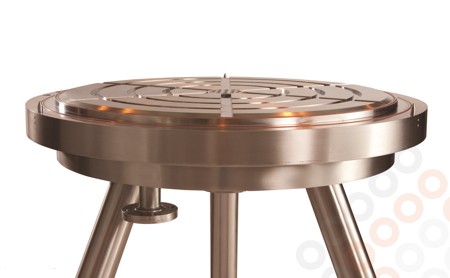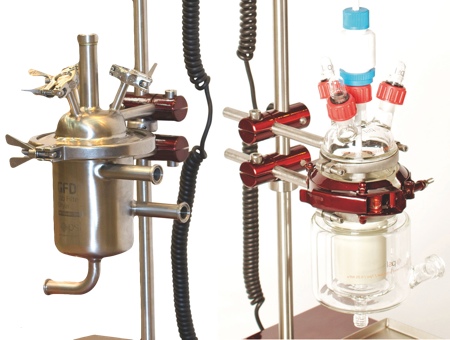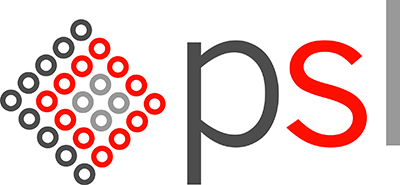Agitated Nutsche Filter Dryer (ANFD) technology has been widely used in commercial manufacturing of advanced drugs around the world for the past 20 years. From the outside, the technology seems to have remained the same, but on closer inspection equipment designers such as Powder Systems Limited (PSL) have refined these pressured filter dryers to make them the 'work horses' of pharmaceutical plant.
Filtration
A pressure nutsche filter dryer is becoming the most common type of equipment for Active Pharmaceutical Ingredient (API) manufacturing as it combines filtering and drying with excellent containment methods. By continuously working closely with drug manufacturers, the filtration experts of PSL developed an ultimate filtration process by refining process details such as high quality welding of the filter mesh onto the support ring, special filter plate design to ensure optimal drainability, as well as innovative filtration rings and meshes to offer side, bottom and also basket filtration capabilities.
Washing
Once the solid and liquid are separated by applying gas pressure (usually nitrogen), it is important to remove the residual filtrate and wash out any impurities. To improve the efficiency of the filtration and washing, the agitator is used to smooth out any cracks or preferential channels that have formed in the product cake. The type of agitator is key for an efficient washing process. PSL's one-piece agitator has alternating teeth on each arm (typically two), which forces the product back and forth across the surface creating a differential velocity mixing.
Drying
Once the product has been filtered and washed, the product is ready to be dried, or it can be discharged as a wet cake or re-slurry. The heat transfer area of the dryer is one of the most important factors in product drying. The heat transfer area can be divided into three basic parts: the filter base, the vessel sidewall and dished-top, and the heated agitator.
PSL’s Filter Dryer provides optimum heat transfer firstly through a direct heating of the filter base. Some filters have an air gap of a few centimetres between the heated base and the filter media. This air gap will isolate the heat from directly heating the product and usually accounts for only 5% of the heat transfer. With PSL’s ANFD, the product has a direct base heating, where the filter media sits directly on the heated base, and can supply up to 25% of the heat transfer.

Direct base heating with minimum gap design between the filter media and the heated base
The agitator is, by far, the most active heat transfer surface of the dryer, accounting for more than 50% of the heat used for drying. The agitator on PSL's filter dryers has been designed to supply the maximum heat transfer with heating fluid running through the shaft and arms. The PSL agitator is a totally sealed one-piece component, to prevent leakage of heat transfer fluid into the process.
Finally the sidewalls that are in direct contact with the cake account for the other 25–40% of the heat transfer. To prevent any condensation of the evaporated solvent from dripping back into the product during drying, the rest of the vessel wall and dished-top need to be heated.
Discharging
There are various ways to discharge the product from an ANFD vessel. The most common method, especially with large scale filters, is through an automated discharge plug using the agitator to offload the powder into a container. However, this method does not provide full product recovery and can cause cleaning difficulties.
PSL pioneered a discharging method called the Direct Heel Recovery system that has proven to be the most efficient for high yield productivity. The offloading glovebox isolator manufactured and integrated by PSL provides high containment down to nanogram levels, thus protecting the operator, product and environment during the discharging operation. Through the ergonomically designed high containment isolator, the operator can rake out all the remaining heel for full product recovery under safe conditions.
For circumstances where even higher containment is required, PSL is the only manufacturer in the world to provide the ground-breaking FilterBox: a filter dryer fully integrated into a high containment isolator.
Technology transfer
Lab scale filter dryer technology has not always been available for accurate scaling-up studies. During laboratory studies and R&D product development, chemists need to work on similar technology to evaluate and determine the parameters discussed above. Traditional filtration and drying methods usually found in laboratories are Buchner filtration, centrifuge and oven dryer. These technologies cannot be transferred successfully to commercial production scale.

Lab scale filter dryer vessel in stainless steel or glass for simulation studies prior to scaling up
PSL therefore launched a smaller agitated nutsche filter dryer to provide the same technology for batches of final product less than 200g. This lab-scale nutsche filter dryer, called GFD, is available in glass for complete process visibility or stainless steel for higher pressure requirements. The GFD range performs the same filtration under vacuum and pressure, washing and re-slurry capabilities, and thermal drying through a heating jacket.
Sterile application
To meet increasing demand from the biopharmaceutical market, PSL developed a unique aseptic design to provide sterile filtration and drying. The filters have CIP (Clean-In-Place) and SIP (Steam-In-Place) capabilities and are built to meet the strict manufacturing requirements necessary for aseptic processes. PSL’s filter dryers utilise gas lift-off mechanical seals and a unique tilting offloading design avoiding the need for the large footprint and capital expenditure of VHP isolators. The rotating vessel allows maximum product recovery of almost 100%, while maintaining the sterility envelope.





